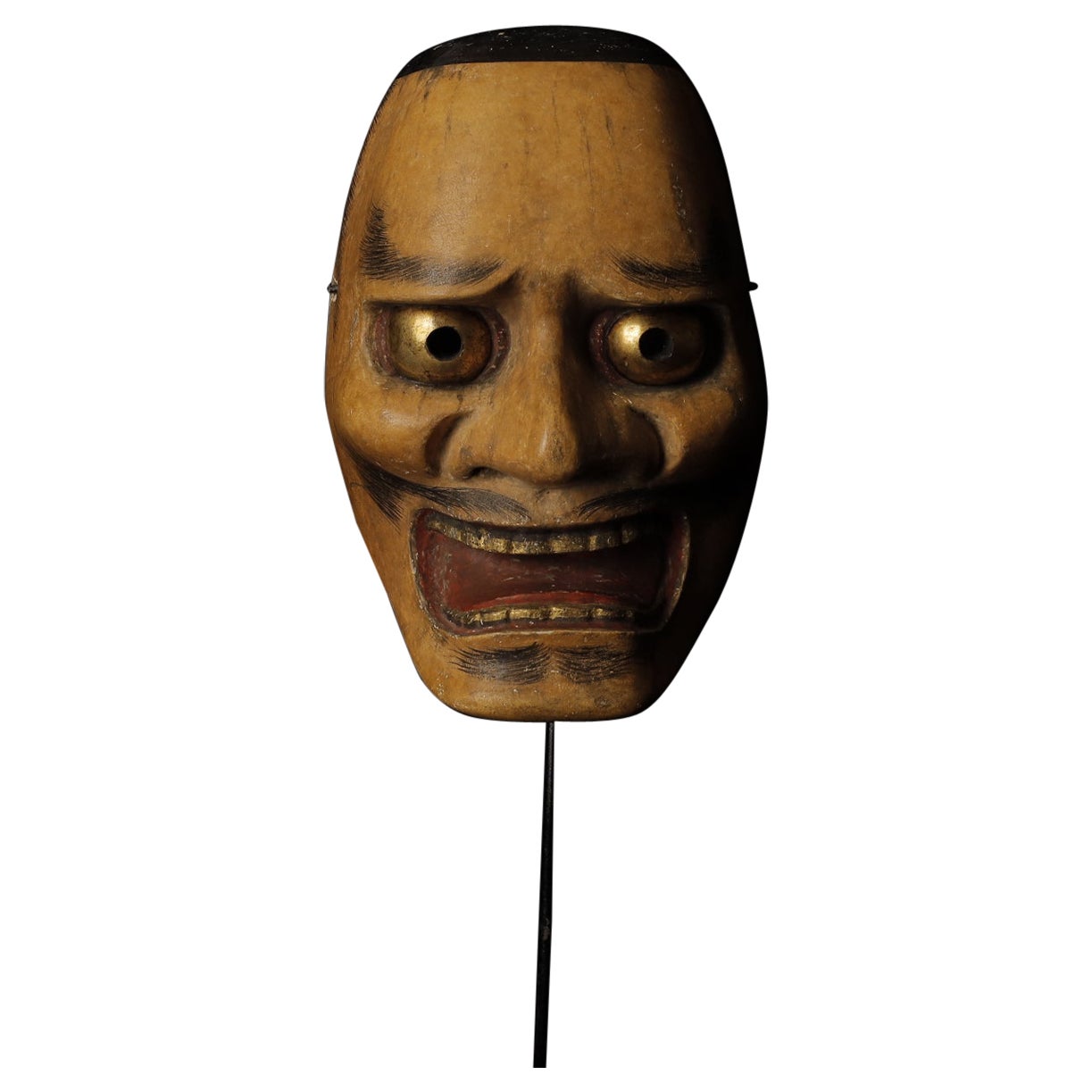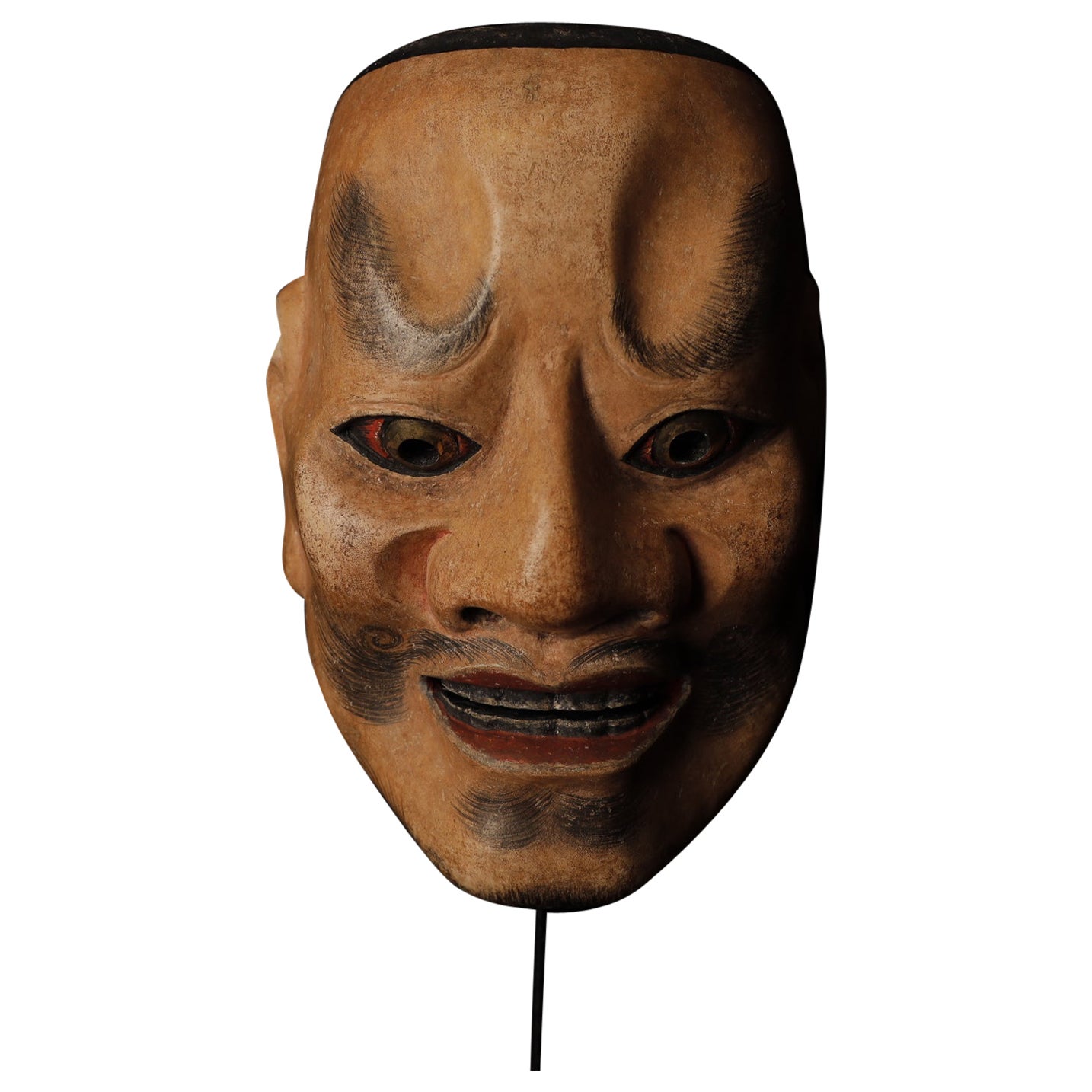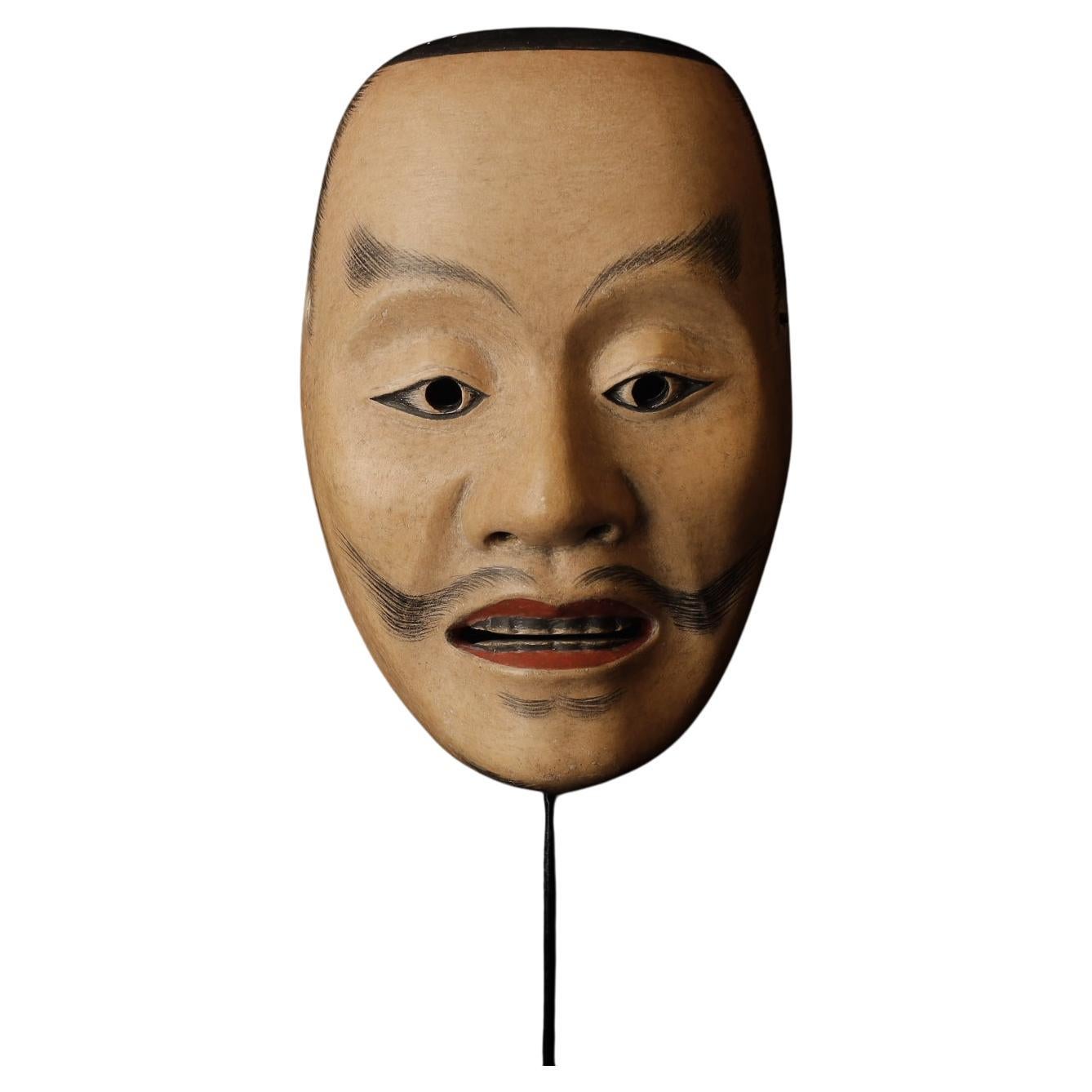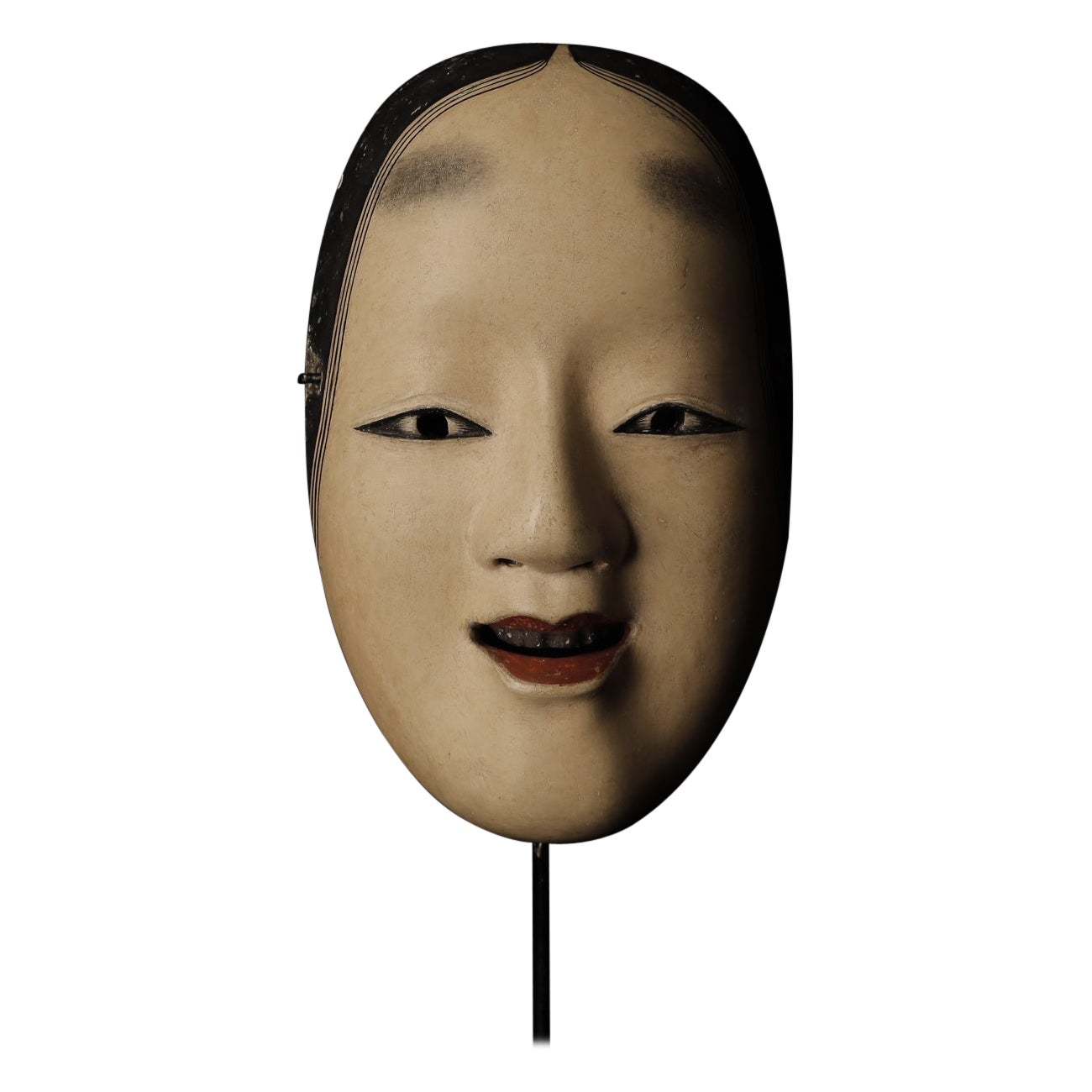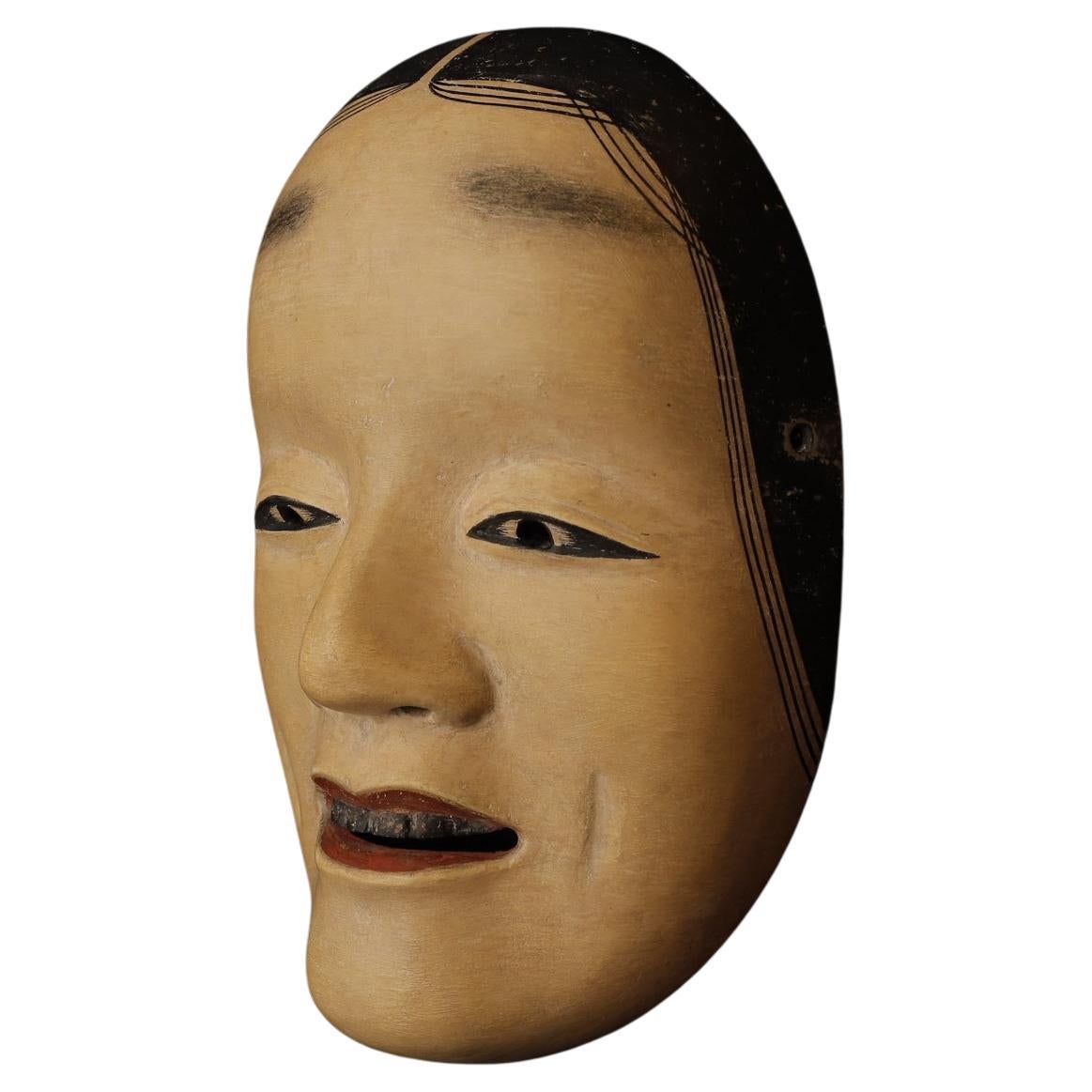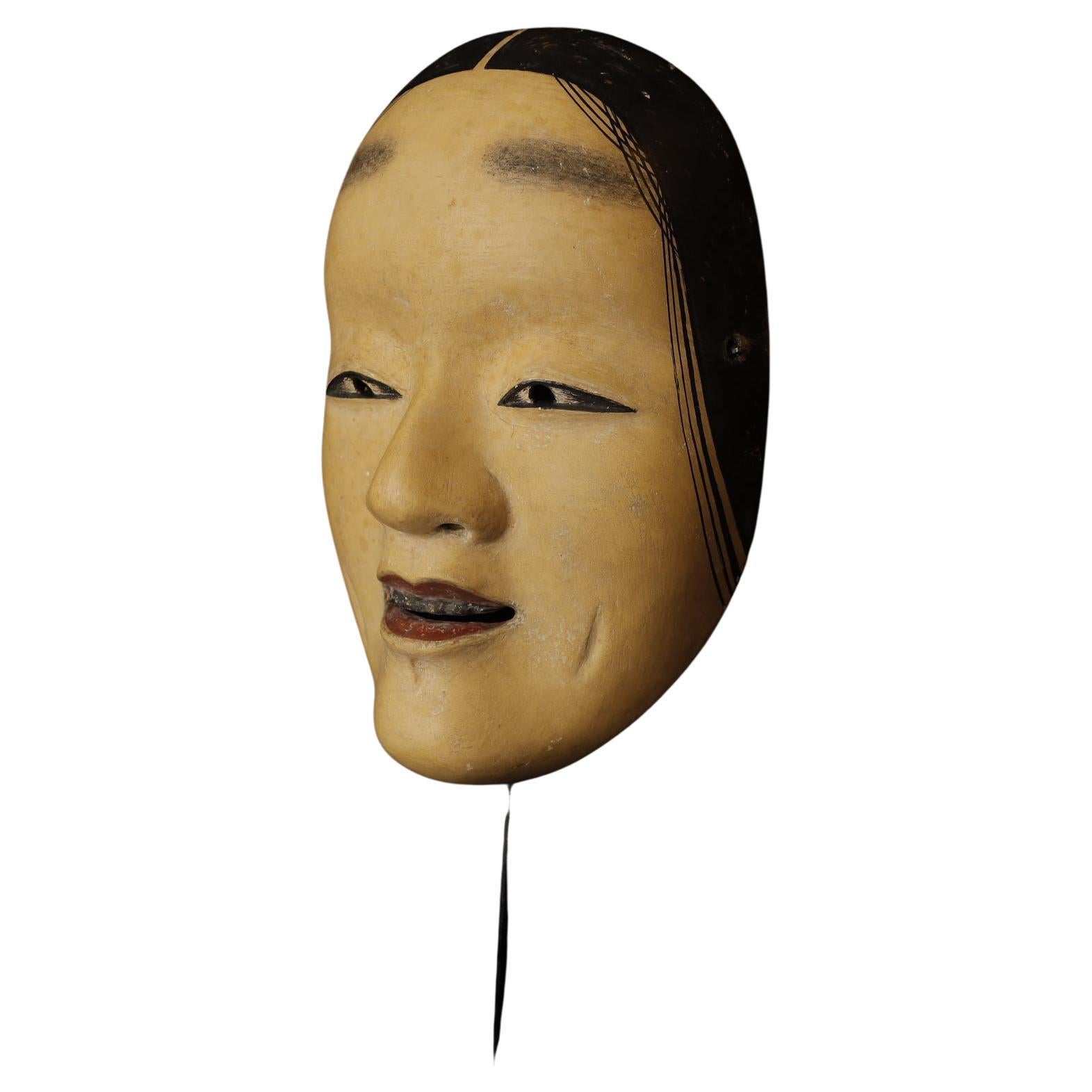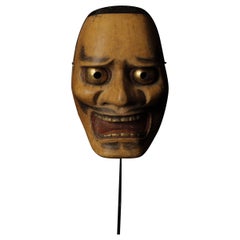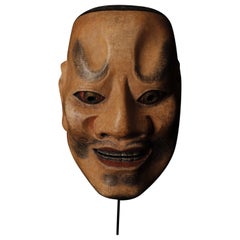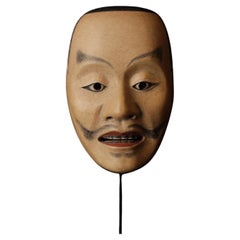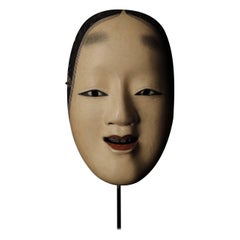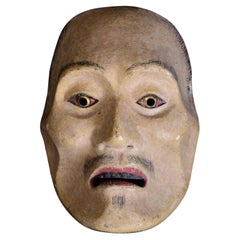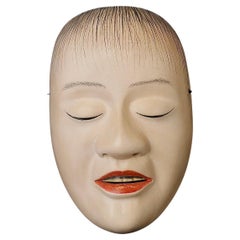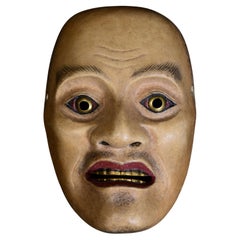Items Similar to Japanese Noh Mask of Hashihime (橋姫)
Want more images or videos?
Request additional images or videos from the seller
1 of 14
Japanese Noh Mask of Hashihime (橋姫)
$1,150
£873.22
€998.59
CA$1,606.72
A$1,787.02
CHF 933.13
MX$21,746.13
NOK 11,917.45
SEK 11,176.46
DKK 7,452.90
Shipping
Retrieving quote...The 1stDibs Promise:
Authenticity Guarantee,
Money-Back Guarantee,
24-Hour Cancellation
About the Item
Hashihime (橋姫)
There is no existing play featuring the “Hashihime” mask, but currently, it is used in performances where the character places an iron ring (katayude) on their head. The white area on the forehead represents where the headband is worn. The “Hashihime” mask is used in plays that involve water-related situations. The wet hair, as if freshly out of water, symbolizes the character’s deep delusion or obsession, resembling the appearance of a snake.
----
This collection of masks, although unsigned, is attributed to the renowned Noh mask maker Takada Fuki (高田 冨季, 1935–2008). Known for his exceptional craftsmanship and attention to detail, Takada Fuki was a prominent figure in the world of Noh mask making, capturing the spirit and emotion of each character through his finely crafted works. Fuki trained under the esteemed master Hori Yasemon (堀安右衛門, 1899–1976), a celebrated artist in Noh mask-making, recognized for his meticulous technique and profound understanding of traditional Japanese theater. Through Yasemon’s teachings, Fuki mastered the intricate art of Noh mask making, combining the traditional style with his personal artistic touch.
Fuki’s masks are highly regarded for their expressiveness and ability to convey deep emotional resonance on stage, continuing to be an integral part of Noh performances today. His legacy, shaped by the tutelage of Hori Yasemon, remains influential in the craft of Noh mask making.
- Dimensions:Height: 7.88 in (20 cm)Width: 5.52 in (14 cm)Depth: 1.97 in (5 cm)
- Style:Showa (Of the Period)
- Materials and Techniques:
- Place of Origin:
- Period:
- Date of Manufacture:Unknown
- Condition:Minor losses.
- Seller Location:Fukuoka, JP
- Reference Number:1stDibs: LU10055243080512
About the Seller
No Reviews Yet
Vetted Professional Seller
Every seller passes strict standards for authenticity and reliability
Established in 2023
1stDibs seller since 2024
7 sales on 1stDibs
Typical response time: 13 hours
- ShippingRetrieving quote...Shipping from: Fukuoka, Japan
- Return Policy
Authenticity Guarantee
In the unlikely event there’s an issue with an item’s authenticity, contact us within 1 year for a full refund. DetailsMoney-Back Guarantee
If your item is not as described, is damaged in transit, or does not arrive, contact us within 7 days for a full refund. Details24-Hour Cancellation
You have a 24-hour grace period in which to reconsider your purchase, with no questions asked.Vetted Professional Sellers
Our world-class sellers must adhere to strict standards for service and quality, maintaining the integrity of our listings.Price-Match Guarantee
If you find that a seller listed the same item for a lower price elsewhere, we’ll match it.Trusted Global Delivery
Our best-in-class carrier network provides specialized shipping options worldwide, including custom delivery.More From This Seller
View AllJapanese Noh Theater Mask of a Deigan (泥眼)
Located in Fukuoka, JP
Deigan (泥眼)
Mask, used in Noh theater to represent characters who are possessed, supernatural beings, or individuals under the influence of strong emotions, such as madness or jealo...
Category
20th Century Japanese Showa Sculptures and Carvings
Materials
Wood
Japanese Tenjin (天神) Noh mask. Attributed to Takada Fuki (高田 冨季)
Located in Fukuoka, JP
Tenjin (天神) Noh Mask attributed to Takada Fuki (高田 冨季, 1935–2008)
Mask: Tenjin
SKU: TBA17
Size: W: 15 cm, H: 21 cm
Tenjin is a prominent deity in both Shinto and Noh theater, repre...
Category
Late 20th Century Japanese Showa Sculptures and Carvings
Materials
Wood
Japanese Heita (平太) Noh mask. Attributed to Takada Fuki (高田 冨季)
Located in Fukuoka, JP
Heita (平太) Noh Mask attributed to Takada Fuki (高田 冨季, 1935–2008)
Mask: Heita (平太)
SKU: TBA18
Size: W: 16 cm, H: 21 cm
The Heita mask is used to portray warriors, military commander...
Category
20th Century Japanese Showa Sculptures and Carvings
Materials
Wood
Japanese Noh Mask of Ko-omote- young woman
Located in Fukuoka, JP
Ko-omote
The Ko-omote mask is most often used in Noh performances to depict young women of noble birth or spirits of young maidens. Characters portrayed with this mask are usually g...
Category
20th Century Japanese Showa Sculptures and Carvings
Materials
Wood
Japanese Noh Mask of Ko-omote- young woman
Located in Fukuoka, JP
Ko-omote
The Ko-omote mask is most often used in Noh performances to depict young women of noble birth or spirits of young maidens. Characters portrayed with this mask are usually g...
Category
20th Century Japanese Showa Sculptures and Carvings
Materials
Wood
Japanese Noh Mask of Ko-omote- young woman
Located in Fukuoka, JP
Ko-omote
The Ko-omote mask is most often used in Noh performances to depict young women of noble birth or spirits of young maidens. Characters portrayed with this mask are usually g...
Category
20th Century Japanese Showa Sculptures and Carvings
Materials
Wood
You May Also Like
19th Century, Meiji, Antique Japanese Wooden Noh Mask
Located in Sampantawong, TH
Antique Japanese wooden Noh mask.
Age: Japan, Meiji Period, 19th Century
Size: Length 20 C.M. / Width 14.8 C.M. / Thickness 9.5 C.M.
Condition: Nice condition overall (some expected...
Category
Antique 19th Century Japanese Antiquities
Materials
Wood
$1,104 Sale Price
20% Off
Japanese Noh Mask
Located in Chonburi, TH
This Japanese Noh mask is a finely crafted example of traditional theatrical art, hand-carved from wood and featuring a serene, enigmatic expression typical of classical Noh performa...
Category
20th Century Japanese Showa Sculptures and Carvings
Materials
Wood
Japanese Noh Mask depicting Yoroboshi character
Located in Fukuoka, JP
Japanese signed Noh Mask depicting ”Yoroboshi” character, who was disowned by his father, became blind with grief and tragically,
"It's full of sorrow in the heart while leaving a ...
Category
20th Century Japanese Sculptures and Carvings
Materials
Wood
19th Century, Meiji, Antique Japanese Wooden Noh Mask
Located in Sampantawong, TH
Antique Japanese wooden Noh mask.
Age: Japan, Meiji Period, 19th Century
Size: Length 20.8 C.M. / Width 14.9 C.M. / Thickness 10.2 C.M.
Condition: Nice condition overall (some expec...
Category
Antique 19th Century Japanese Antiquities
Materials
Wood
$1,104 Sale Price
20% Off
19th Century, Meiji, Antique Japanese Wooden Noh Mask
Located in Sampantawong, TH
Antique Japanese wooden Noh mask.
Age: Japan, Meiji Period, 19th Century
Size: Length 20.3 C.M. / Width 14.7 C.M. / Thickness 9.3 C.M.
Condition: Nice condition overall (some expect...
Category
Antique 19th Century Japanese Antiquities
Materials
Wood
$1,000 Sale Price
20% Off
Japanese Noh Mask Depicting Yoroboshi 'Blind Monk' Character Signed by Myori
Located in Fukuoka, JP
Japanese signed Noh Mask depicting Yoroboshi (Blind Monk) character
Yoroboshi captures the complex emotions of intense grief and spiritual deliverance. Behind the painful derangemen...
Category
Early 20th Century Japanese Sculptures and Carvings
Materials
Wood
More Ways To Browse
Mask Collection
Japanese Iron Sculpture
Japanese Wood Masks
Wood Mask Japan
Carved Wood Snake
Snake Carving
Wood Snake Sculpture
Iron Snake
Noh Mask
Japanese Noh Mask
Japanese Theater Mask
Noh Theater Mask
Lantern Light Japanese
Edo Period Bronze
Japanese Garden Ornaments
Chinese Monks
Large Buddha Statue
Indonesian Wood Carving
